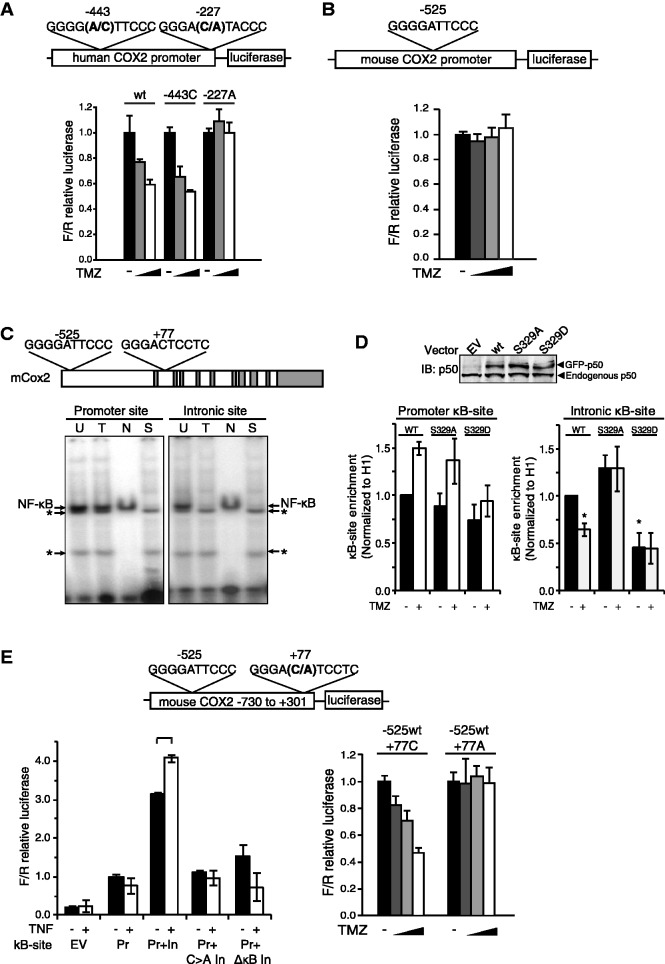Figure 5.
The role of the −1C base in the presence of >1 κB-site. (A, B and E) Luciferase reporter assays in U87 cells using the indicated Cox2 promoter/reporter after 16 h of treatment with TMZ at 0, 50, 100 and 250 μM. (A) Human Cox2 promoter reporter with the indicated −1 position mutation. (B) Murine Cox2 promoter (Pr) reporter. (C) Upper: sequences of the murine Cox2 promoter and intronic κB-sites. Lower: EMSA using the indicated κB probe following treatment with vehicle (U) or 100 μM TMZ (T). N and S: non-specific and specific competitors, respectively. *Non-specific bands. (D) Quantitative ChIP in wt-MEFs transfected with the indicated GFP-tagged p50 isoforms (wt, S329A and S329D) following 16-h treatment with 100 μM TMZ or vehicle. IP was performed with anti-GFP, anti-histone H1 or anti-IgG and qPCR performed using primers flanking the mouse Cox2 promoter (left) or intronic (right) κB-sites. Data represent promoter enrichment of GFP-p50 relative to IgG control and H1 ± SEM of three separate experiments. *P < 0.05 relative to vehicle treatment in p50wt expressing cells. (Inset: immunoblot of transfectants with anti-p50 antibody.) (E) Upper: murine Cox2 promoter/intron 1 (−730/+301) reporter with the indicated (C–A) mutation at the −1 position. Lower left: luciferase assay using either the murine Cox2 promoter (Pr) or promoter/intronic (Pr+In) reporter with the indicated mutation or κB-site ablation (ΔκB). Cells were either untreated or stimulated with 10 ng/ml TNFα. Lower right: Luciferase assay using the murine Pr+In reporter with the indicated −1 position mutation in the intronic (+77) κB-site. Luciferase data show mean value, normalized to value without TMZ, in all except (E) which is normalized to the untreated Pr value, ±SD of triplicate samples. *P < 0.05 relative to untreated.

